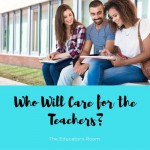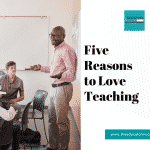Have you signed up for The Educator’s Room Daily Newsletter? Click here and support independent journalism!
It was a cold December night in the west Texas desert. Our family bundled up in coats, hats, and gloves and walked in the dark along the red-lit pathway to the back of the Big Bend National Park visitor center. A couple of rangers and one night photography expert recited stories about the constellations as the crowd of Christmas break visitors gazed in awe at the clear star-lit sky. I will never forget looking up into the darkness to see the distinct outlines of the Milky Way without the help of a telescope. I couldn’t help but be amazed at the awesome power of nature all around me.
I love national parks and find every opportunity to visit one.
Each year my summer vacation planning centers on which national parks our family has not visited and where we would like to go next. After we pick the primary destinations, I plan to see as many national park sites as possible along the way. As soon as we arrive at the visitor center of a new location, my inner teacher emerges. My first stop is usually the ranger stand. There I get information about the local Junior Ranger Program, pick up maps, and find out where we can get a stamp in our National Parks Passport. Yes, it is a thing, and yes, we get it stamped everywhere we go.
Visiting countless national parks around the country has convinced me that it is the most organic summer professional development teachers can seek. There are parks for every interest, from science to literature to history. Moreover, they are run by an agency that is both underfunded and hard-working, just like teachers.
So why should teachers make visiting our nation’s national parks a vacation priority during the summer months?
Recreation to Refresh Body and Mind
All year well-meaning people tried to offer advice on how teachers could make it through the third year of pandemic teaching, which was the most challenging year yet. Tricks like self-care, relaxation techniques, or meditation were supposed to help us get through all of the challenges coming at us from every direction.
By visiting the national parks (or even local state parks), we can finally get out of our classrooms and into nature. This special type of recreation pushes our bodies, clears our minds, and exposes us to the beauty around us. For those who get a little squeamish in nature (I get it, seeing black bears in the Smoky Mountains was honestly a little frightening), many parks offer programs that provide contact with nature without the risk of getting lost on a trail.
Hands On Learning About Our Favorite Subjects
I was both an English and history major in college. While I’ve never actually taught history, history is an integral part of my classroom. My husband and I attended the commemoration of the 150th anniversary of the Battle of Gettysburg, and our whole family climbed through the cliff dwellings at Mesa Verde. When my husband and I went to Hawaii for spring break, we made a stop at Puʻuhonua o Hōnaunau, a historic place of refuge before colonization. I even convinced him to stop at the Edgar Allen Poe National Historic Site in Philadelphia after visiting the birthplace of American independence.
But national parks also have rock formations for geologists and plants and animals for biologists. We’ve learned about dormant and active volcanoes in both New Mexico and Hawaii. Our children have worked their way through Junior Ranger books in nearly every place we’ve visited, and we’ve learned with them. We’ve practiced math and map skills and listened closely as park rangers told us about history, science, and geography. We’ve climbed into the earth to walk through caves and have sat still in the dark as bats exit their homes for night flights. For teachers dedicated to lifelong learning, each national park site provides new information and experiences that we can take back to our classrooms, no matter our discipline.
An Opportunity to Grapple With History
My family once made an impromptu trip across the Texas border to the Cane River Creole National Historic Site in Louisiana. There we visited the grounds of two plantations, one of which has the only remaining stone/brick slave cabins in the US. I thought I understood the history of sharecropping, which was still a way of life in the south through the 1970s. But seeing those cabins and walking through the plantation general store where sharecroppers bought most of their goods showed me that I really hadn’t known anything. Six years later, that lesson sticks with me when my students and I talk about how far our country has come and how far our country still has to go.
Like America, the National Parks Service has a complicated history. There are national parks and monuments built on land stolen from Native American tribes. There are portions built by enslaved peoples and oppressed immigrant labor. A friend recently asked what she should tell her children about Mount Rushmore on their planned vacation to the Black Hills, and I told her to tell her children the truth: the monument is on land taken from indigenous tribes, and the land is still considered sacred. The men honored on the monument shaped our country with great deeds while also harming and oppressing those who stood in the way of those accomplishments.
Over the years of visiting historic sites all over the country, we’ve discovered a growing desire to connect the dots between history and its impact on our present. We’ve seen an increased effort to build bridges between the cultures that have been harmed over the years and the people who are visiting the sites to learn more about the places and the people who inhabited those spaces.
It’s far from perfect, but as teachers, we can reward the work that is being done by supporting the people and places with our presence. Most park rangers respect the history of the places they are charged with. Most want the truth to be told and often include members of tribes and peoples who were impacted by slavery, expansion, and genocide. Additionally, there is something to be said for seeing it ourselves. Visiting these sites can provide a better understanding of places as we teach those lessons to our students.
This summer, find the closest national parks site to your house and make plans to go. It might not start an obsession as it did with me, but you just might find that it will make you a more insightful teacher in the year to come.
Editor’s Note: If you enjoyed this article, please become a Patreon supporter by clicking here.






